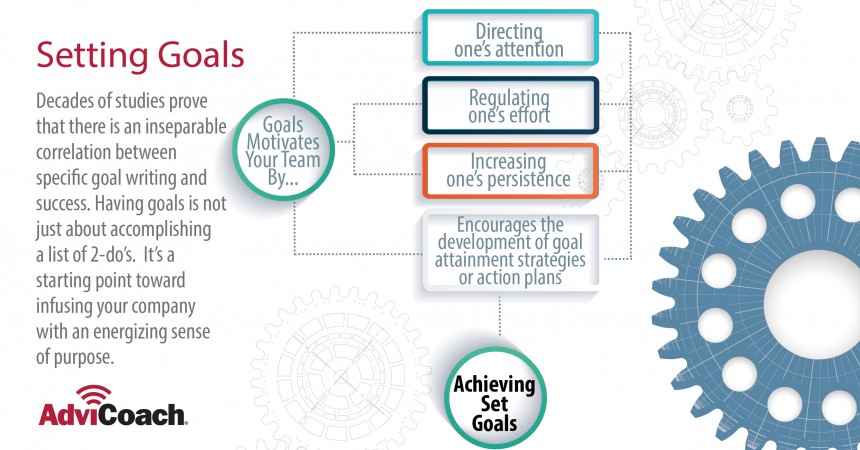
Set Your Team Up for Success.
A strong motivated team of employees is the foundation of a successful business. If the inner workings of your business aren’t successfully functioning, then how is the actual business supposed to thrive? No matter how intelligent, passionate, determined or ambitious an entrepreneur is, the success of a small business depends upon how well you motivate your employees to work together.
So what is the most important step to motivating your team?
It all begins with setting goals. Setting goals increase efficiency, improved employee morale and enhance innovation – all of which can provide your small business with financial savings. It’s hard to argue against working to improve your employees operations as a team.
Small business owners should sit down with their employees or team leads (depending on the size of the company) to brainstorm goals that will shape the future of the entire company. This one action will infuse the company with an energizing sense of purpose.
Set SMART goals
- Specific
- Measurable
- Achievable
- Relevant
- Time-Bound
When a team crafts their goals with SMART parameters in mind, they are setting themselves up for success. Clearly defined expectations are critical to the productivity of any organization. If goals aren’t detailed and well defined, they may be setting themselves up for failure from the start.
Coach Tip for Small Business Owners:
Don’t derail the whole goal-setting process, by personally detailing each team member’s goals. Provide guidance and motivation, but trust your people to write their individual goals and action. It’s important to allow employees to select the “how” of their contributions… to think about the details that will go into each goal that will make them attainable and not disconnected from their day-to-day reality.
So what is the best way to keep your employees engaged throughout the year?
1. Create A Learning Culture:
Creating a learning culture in your company can produce an environment encouraging continual growth. Try setting a goal to have some sort of educational team meeting at least once per month. Team members can switch off “hosting” the meeting by educating their peers on a topic close to the business. This can help employees stay up-to-date with current industry information while simultaneously encouraging new ideas and learning.
2. Overcome a Weakness:
Nobody likes to sit down and pick apart what their team isn’t doing well, but doing so can help a team uncover things they could be doing better. Teams should identify weaknesses that they’ve discovered over the past year, and pick a few of them to tackle head on. When a team is successfully able to overcome a weakness, this can prove as motivation to try and tackle larger problems within the business.
3. Inspire Collaboration:
Some people would be surprised to find out that in a hierarchical business, many lower-level employees are hesitant to go to higher-level employees with new ideas, problems or solutions because they don’t want to be seen as overstepping their boundaries. When this happens, sometimes the best ideas go unheard. To discourage this from happening, teams should set clear goals regarding collaboration to help urge all levels of employees to communicate with one another. This enhanced partnership within a small business can help create new solutions to problems, or new ideas altogether.
Encouraged your team to sit down together to evaluate the progress that they have made throughout the course of the year. Goal setting should be a process, and as your team achieves those outlined milestones you can set new ones, so you are constantly working on reaching the team’s full potential.

 Illinois
Illinois






